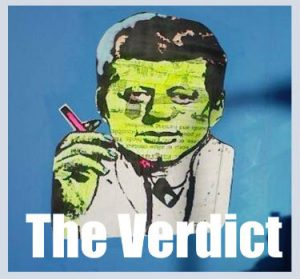Association News
Hart Square: Busting the Myth of Modern Member Engagement
May 23, 2017 - Association News
 Introduction: Uber is the world’s largest taxi company but owns no cabs. One of the largest accommodation providers – Airbnb – doesn’t have a hotel room to call its own. Whilst SKYPE and WECHAT have no wires or exchanges, and ALIBABA, the world’s most valuable retailer, has no inventory. The list goes on! In fact, they have become so disruptive that some are asking why collaborative economy platforms are growing so quickly; what are their implications for employment law and health and safety regulation; and how does consumer protection law apply. Who is regulating them? Is it the EU, the Member State or even the local authority?
Introduction: Uber is the world’s largest taxi company but owns no cabs. One of the largest accommodation providers – Airbnb – doesn’t have a hotel room to call its own. Whilst SKYPE and WECHAT have no wires or exchanges, and ALIBABA, the world’s most valuable retailer, has no inventory. The list goes on! In fact, they have become so disruptive that some are asking why collaborative economy platforms are growing so quickly; what are their implications for employment law and health and safety regulation; and how does consumer protection law apply. Who is regulating them? Is it the EU, the Member State or even the local authority?
Those are all good questions for associations to ponder too! But don’t let’s be fooled into thinking that disruptive technology is only about market dominance via digital platforms. Genomics, 3D printing, advanced materials, advanced oil and gas exploration and recovery, and renewable electricity are also on the top twelve list of developments poised to dislocate us.
So what, if the world’s most popular media owner – Facebook – not only creates no content, but also brings special interest groups together in a way associations previously regarded as their forte? That LinkedIn has already knocked the dynamics of recruitment off kilter, and Amazon has dealt an almost mortal blow to traditional booksellers? Clearly there is no going back, and hankering after the past is no help.
Industry sectors atomized by disruptive technologies will adapt, but they will require a very different set of benefits from their associations. And they in turn will require different skills, finance, and governance to match their members’ needs. Are associations up to the task? Or even thinking that far ahead?
Expectations from members have increased dramatically in recent years, putting pressure on Membership Bodies to ‘compete or get left behind’. Facing demands for personalised content, more online self-service and mobile access, membership bodies are asking, “How do I compete without incurring sky-high costs and project risk?”
Allen Reid: According to Allen Reid of Hart Square, the benefits of modern member engagement systems are clear: Improved relevance to members, increasing retention and revenue; better understanding of member needs, leading to targeted services, cross-sell and up-sell; streamlined services, saving time and money. Plus, of course, improved flexibility to bring new offerings to market, and better business insight – allowing proper strategic management!
The challenge is that many membership bodies are working with systems that are not ‘joined up’ and which create barriers to staying competitive. So, the objective of the workshop ‘Busting the Myth of Modern Member Engagement’, hosted by Hart Square, was to examine those issues with the help of case studies introduced by ASI’s Andy Sherwin and Gordon Brewster.
Andy Sherwin: According to Andy Sherwin, MD of ASI, membership bodies in the US and the UK share common goals. Not unexpectedly they are around increasing member retention, engagement, acquisition, and increasing revenue. In general, these goals are challenged by measurement, reporting, and costs. But the UK suffers from the additional problems of silos, weak integration of databases, websites, and social media, plus inadequate self-service measures.
Moreover, whilst many measure ‘transactions’ such as financial activity and participation, few take account of ‘sentiment’, i.e. are clients satisfied, happy, dissatisfied? Add transactional data to measures of sentiment in the form of an Engagement Management System (EMS) and, so the argument goes, you have a powerful predictive tool.
Gordon Brewster: ASI performance improvement leader, Gordon Brewster, described the ways in which the British Association of Snow-sport Instructors faced the problems of availability of members who wish to spend their time on the top of mountains; contacting and allocating trainers to courses relevant to their skills; and getting feedback – including sentiment – from students.
Meanwhile, The Law Society of Scotland overcame inertia, and limited income streams from the grudge purchase of practice certificates, by throwing open its membership to other than practicing solicitors. Now 90% of revenue comes from ‘non-practice’ fees and CPD.
Michael Hoare
©2017 M J Hoare


